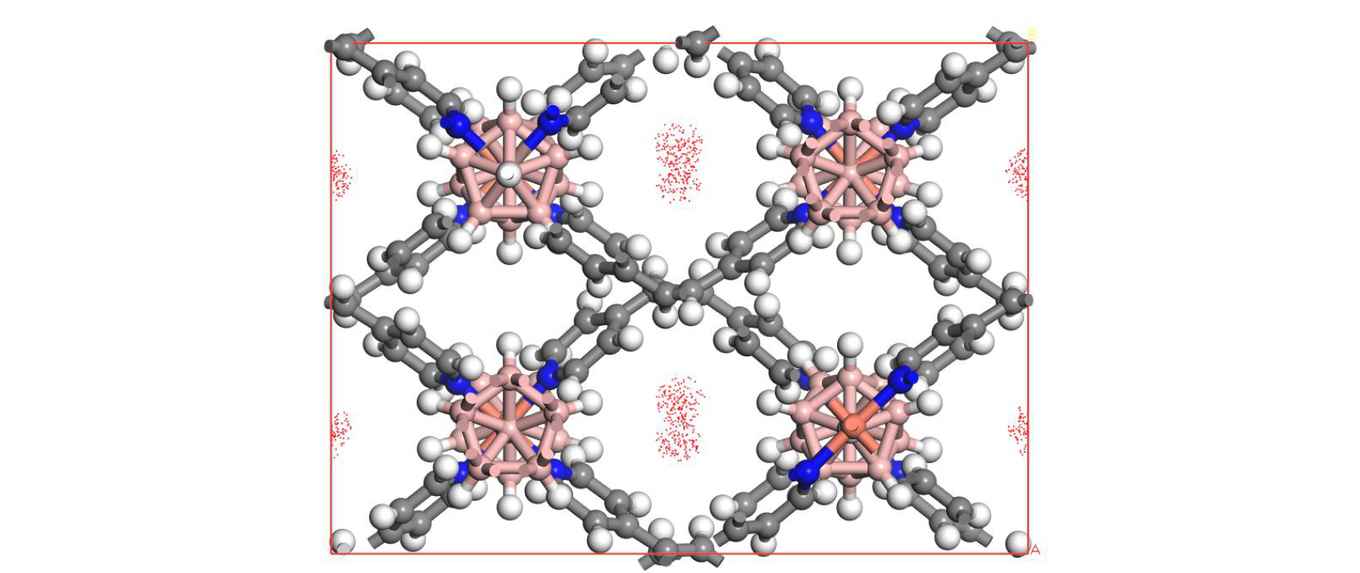Benchmark purification of acetylene from carbon dioxide
Using an ultramicroporous boron cluster hybrid MOF
7 October 2021

Abstract
The separation of C2H2/CO2 is an important process in industry but challenged by the trade-off of capacity and selectivity owning to their similar physical properties and identical kinetic molecular size. We report the first example of symmetrically interpenetrated dodecaborate pillared MOF, ZNU-1, for benchmark selective separation of C2H2 from CO2 with a high C2H2 capacity of 76.3 cm3g-1 and record C2H2/CO2 selectivity of 56.6 (298 K, 1 bar) among all the robust porous materials without open metal sites. Single crystal structure analysis and modelling indicated that the interpenetration shifting from asymmetric to symmetric mode provided optimal pore chemistry with ideal synergistic “2+2” dihydrogen bonding sites for tight C2H2 trapping. The exceptional separation performance was further evidenced by simulated and experimental breakthroughs with excellent recyclability and high productivity (2.4 mol kg-1) of 99.5% purity C2H2 during stepped desorption process.
Publication details
Lingyao Wang, Wanqi Sun, Yuanbin Zhang, Nuo Xu, Rajamani Krishna, Jianbo Hu, Yunjia Jiang, Yabing He, and Huabin Xing: Interpenetration Symmetry Control Within Ultramicroporous Robust Boron Cluster Hybrid MOFs for Benchmark Purification of Acetylene from Carbon Dioxide. Angew. Chem. Int. Ed. 2021, 60, 22865–22870. DOI: 10.1002/anie.202107963